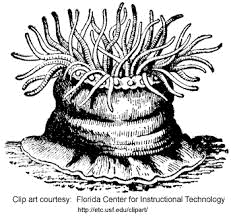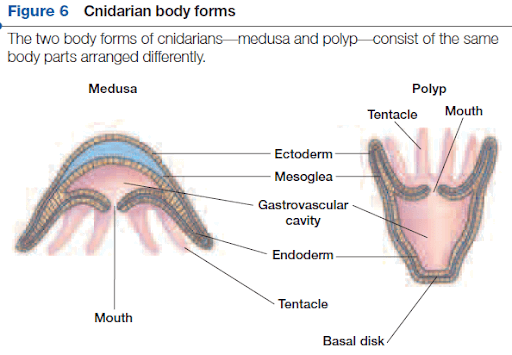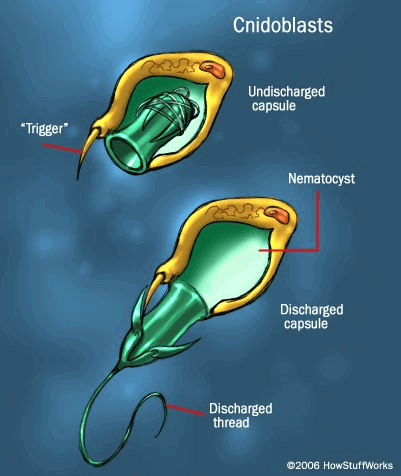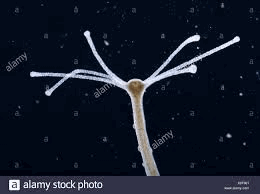Cnidarians
What are Cnidarians and how does their locomotion and defense work?

How does locomotion in jellyfish work?

How do hydras' locomotion work?

How do jellyfish defend themselves ?

How do hydras defend themselves?

- Cnidaria is a phylum under kingdom Animalia containing over 11,000 species of aquatic animals found both in freshwater and marine environments: they are predominantly marine. Their distinguishing feature is cnidocytes, specialized cells that they use mainly for capturing prey. Their locomotion is pretty fast. Their movement is that they contract their hollow, saucer-shaped bodies called bells to force water out, which propels them forward. When a cnidarian contacts a predator or prey item, the capsule opens and the tubule everts. The tubule may be adhesive, or it may entangle the object. Both types serve to hold food items. A third type of tubule is armed with spines that penetrate predators or prey.

How does locomotion in jellyfish work?
- Jellyfish have a dome shaped body, which is made of solid jellylike substance, deriving their name, which is covered by a very thin layer of living cells as protection and sensory. Positioning, the stomach and the mouth are in the center of the dome-shaped body, and that body is covered by flesh like arms. For the actual movement of the Jellyfish they use a movement of contracting muscles and then relaxing them, propelling them forward in the water. The Jellyfish opens and closes the dome like body, which draws in water and then forces the water out pushing it forwards. Using their sense of touch and temperature they move around to safe spots and with their swarm.

How do hydras' locomotion work?
- Their type of locomotion is known as walking. It may bend its body and perform looping movement like that of a leech. They have two distinct methods for moving – 'looping' and 'somersaulting'. Hydra can move from place to place by looping. During looping, Hydra bends its body from the erect standing position and fixes the tentacles to the substratum by the glutinant nematocysts. It then releases the attachment at the basal disc and moves its free end to a new site. The animal then stands up by making free its tentacles. The other locomotion is somersaulting. Another method of rapid movement in Hydra is somersaulting which is a slight modification of looping locomotion. Hydra fixes itself on the substratum by the hypostomal end and then shifts the attachment of the basal disc. The basal disc is then rotated 180° and is fixed to a new position.

How do jellyfish defend themselves ?
- Jellyfish are carnivores, they use their stinging ability to not only use it to kill prey but to also use it as a defensive mechanism. For a Jellyfish each tentacle is covered by thousands of cell cnidoblasts, which contain nematocysts which have the actual stinging threads. For the process of release to happen it needs to encounter another object, and with that physical contact, pressure inside the nematocysts causes the thread to uncoil. When uncoiled they come out of the threads like very small darts that contain venom, more specifically neurotoxin, which is designed to paralyze prey or whoever is hunting it.

How do hydras defend themselves?
- Hydra tentacles contain barbed, poison containing cnidocytes that they use to stun animals like the water flea, Daphnia, before eating them alive, and to protect themselves from attack by other animals. The linking of opsin to cnidocytes explains how hydra are able to respond to light even though they do not have eyes. This is how hydars are able to protect themselves.




